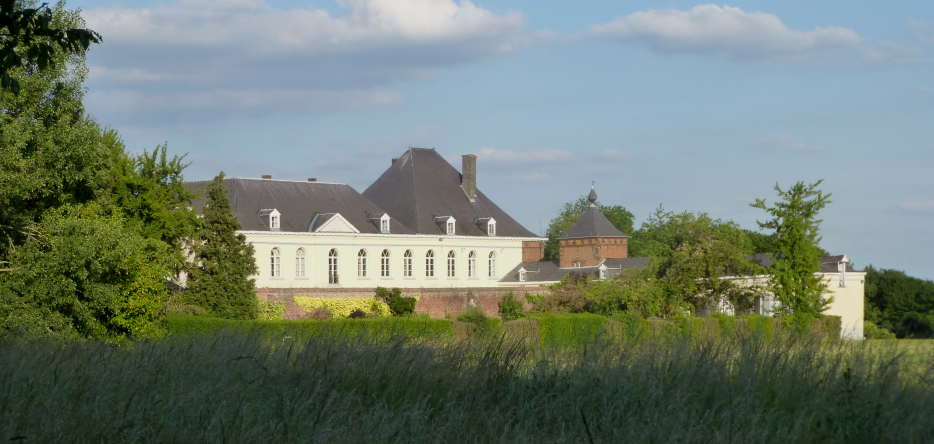Date and place
- June 18th and 19th, 1815 in Wavre and its surroundings, 27 kilometers southeast of Brussels and 17 kilometers east of the Waterloo battlefield (province of Walloon Brabant, Belgium).
Involved forces
- Detached corps of the French Army of the North (25,513 infantry, 5,617 cavalry, 2,635 artillery) under the command of Marshal Emmanuel de Grouchy.
- Prussian army (15,000 infantry, 2,000 cavalry) led by General Johann Adolf von Thielmann.
Casualties and losses
- French army: 2,500 killed, injured or missing.
- Prussian army: 2,500 killed, injured or missing.
Aerial panorama of the Wavre battlefield
Marshal Grouchy's victory over the Prussians at Wavre came too late: the Battle of Waterloo had taken place without his intervention. This final success only enabled him to retreat in good order and bring back to France 50,000 to 60,000 soldiers he had gathered during his march.
The field
The bulk of the fighting took place in the town of Wavre and on both banks of the river Dyle , heading southwest to Bierges and Limal. The river, swollen by the rains, was not fordable, and the paths were extremely muddy.
The fights
On June 18, while the terrible battle of Waterloo was taking place 17 kilometers to the west, Marshal Emmanuel de Grouchy, who was pursuing the Prussians to Wavre as ordered, was confronted with the Prussian III Corps of General Johann von Thielmann .
Intense fighting took place on the heights, then in the town itself for control of the Christ bridge [50.71474, 4.61054] over the river Dyle, and finally a little further south around the wooden bridge near the Bierges mill [50.70762, 4.60142].

In the middle of the night, the Prussians launched a cavalry attack on the French lines, which resisted.
On the morning of the 19th, the troops of François Antoine Teste took Bierges, those of Dominique Vandamme, Count of Unsebourg, entered Wavre and the Prussians must resolve to evacuate the city and retreat towards Louvain, to the north.
While Marshal Grouchy settled at the castle farm of Bawette [50.72906, 4.59909], two kilometers north-northwest of Wavre, news of the defeat of Waterloo arrived.

Subsequently, the French began the evacuation between 11 a.m. and noon, with Vandamme's corps remaining behind until the afternoon to cover the retreat. This will be carried out in good order to France, via Namur.
Aftermath
The Battle of Wavre, an indisputable French tactical victory, was nonetheless a strategic defeat to the extent that the ground was left to the enemy due to the retreat made necessary by Napoleon's rout at Waterloo.
Picture - "The Christ Bridge in Wavre around 1830". Vintage engraving.

Acknowledgments
We express our gratitude to Mr. Dominique Timmermans, who introduced us to this battlefield, the day before the bicentenary.Photos Credits
Photos by Lionel A. Bouchon.Photos by Marie-Albe Grau.
Photos by Floriane Grau.
Photos by Michèle Grau-Ghelardi.
Photos by Didier Grau.
Photos made by people outside the Napoleon & Empire association.